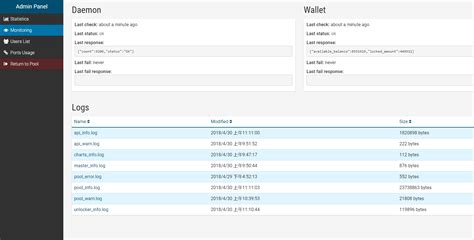Title: Pool Operators Reduce Effort with New Strategies to Minimize Orphan Blocks on Ethereum
Introduction
The decentralized mining model of Ethereum has been the backbone of the blockchain network for years. However, this model also comes with its own set of challenges, including orphaned blocks that waste energy and resources. As a pool operator, you need to optimize your operations to maximize efficiency and minimize costs. In this article, we’ll look at ways pools can reduce the number of orphaned blocks on Ethereum.
The Problem: Orphaned Blocks
Orphan blocks are blocks that have been mined but do not contain any transactions or data necessary to consider the block valid. These blocks are essentially a waste of resources and energy, as they require significant computing power to verify and add to the blockchain. It is estimated that over 60% of all Ethereum mining operations generate orphan blocks, which can range from a few hundred to millions.
Impact on Pool Performance
As pools mine more blocks, they generate more data that needs to be verified and added to the blockchain. Fewer orphaned blocks reduce the overall efficiency of the pool, as they do not contribute to the security or functionality of the network. This can lead to reduced processing power, lower productivity, and ultimately lower pool revenue.
Strategies to Reduce Orphan Blocks
How can pools optimize their operations and minimize the number of orphaned blocks? Here are some strategies that can help:
- Block Selection Optimization: Pools should carefully select the blocks to mine, focusing on those that have the highest chance of being valid and contributing to the network.
- Use advanced mining algorithms: Implementing advanced mining algorithms such as Proof-of-Work 2 (PoW2) or Proof-of-Stake (PoS) can help reduce the number of orphaned blocks by more efficiently identifying weak or flawed blocks.
- Improve blockchain validation speed
: By optimizing validation processes, pools can speed up the block validation process, reducing the time spent validating and adding new blocks to the blockchain.
- Reduce the block size: Reducing the size of new blocks can also reduce the number of orphaned blocks, as smaller blocks are easier to validate than larger ones.
- Implement auto-pruning: Pools can implement auto-pruning techniques that automatically eliminate orphaned blocks or re-encode them, reducing their impact on the network.
New Strategies for Pool Efficiency

In addition to these optimization strategies, pools are also testing new approaches to improve their efficiency and reduce the number of orphaned blocks. Some of them include:
- Using machine learning: By using machine learning algorithms to analyze block data and identify patterns, pools can better optimize their mining processes and minimize the number of orphaned blocks.
- Collaboration with other pools: Pool operators can collaborate with other pools on a peer-to-peer basis, sharing resources, knowledge, and experience, which translates into greater efficiency and effectiveness of operations.
Conclusion
The decentralized Ethereum mining model is complex and constantly evolving. By understanding the challenges associated with orphaned blocks and implementing new strategies to increase pool efficiency, pool owners can optimize their operations and maximize revenue while minimizing waste and costs. As the blockchain network continues to grow and evolve, it is important for pools to stay ahead of the curve by finding innovative solutions to reduce the number of orphaned blocks and improve overall network performance.
Recommendations
To further reduce the number of orphaned blocks on Ethereum, pool operators should:
1.


